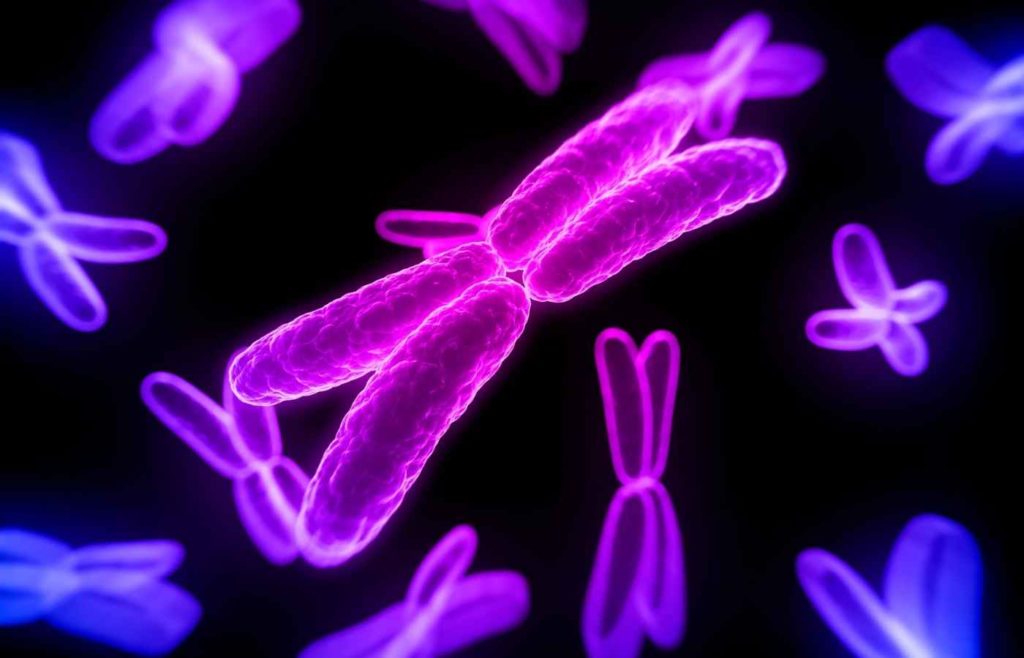Topic Content:
Chromosome: The Basis of Inheritance/Heredity

Chromosomes are the carriers of genes. They are located in the nucleus of a cell and can only be seen with the aid of a microscope during cell division.
All organisms of the same species have the same number of chromosomes. The number of chromosomes in the body cell is known as the diploidA diploid cell has two complete sets of chromosomes. Most cells in humans are diploid, comprising 23 chromosome pairs, so 46 chromosomes in total. This is 22 pairs of autosomes and... More number (2n), while we have the haploidHaploid refers to the presence of a single set of chromosomes in an organism's cells. Sexually reproducing organisms are diploid (having two sets of chromosomes, one from each parent). In humans,... More number (n) in a gamete.
Examples of chromosome numbers in the body cells of some organisms are shown in the table below.
You are viewing an excerpt of this Topic. Subscribe Now to get Full Access to ALL this Subject's Topics and Quizzes for this Term!
Click on the button "Subscribe Now" below for Full Access!
Subscribe Now
Note: If you have Already Subscribed and you are seeing this message, it means you are logged out. Please Log In using the Login Button Below to Carry on Studying!



Responses